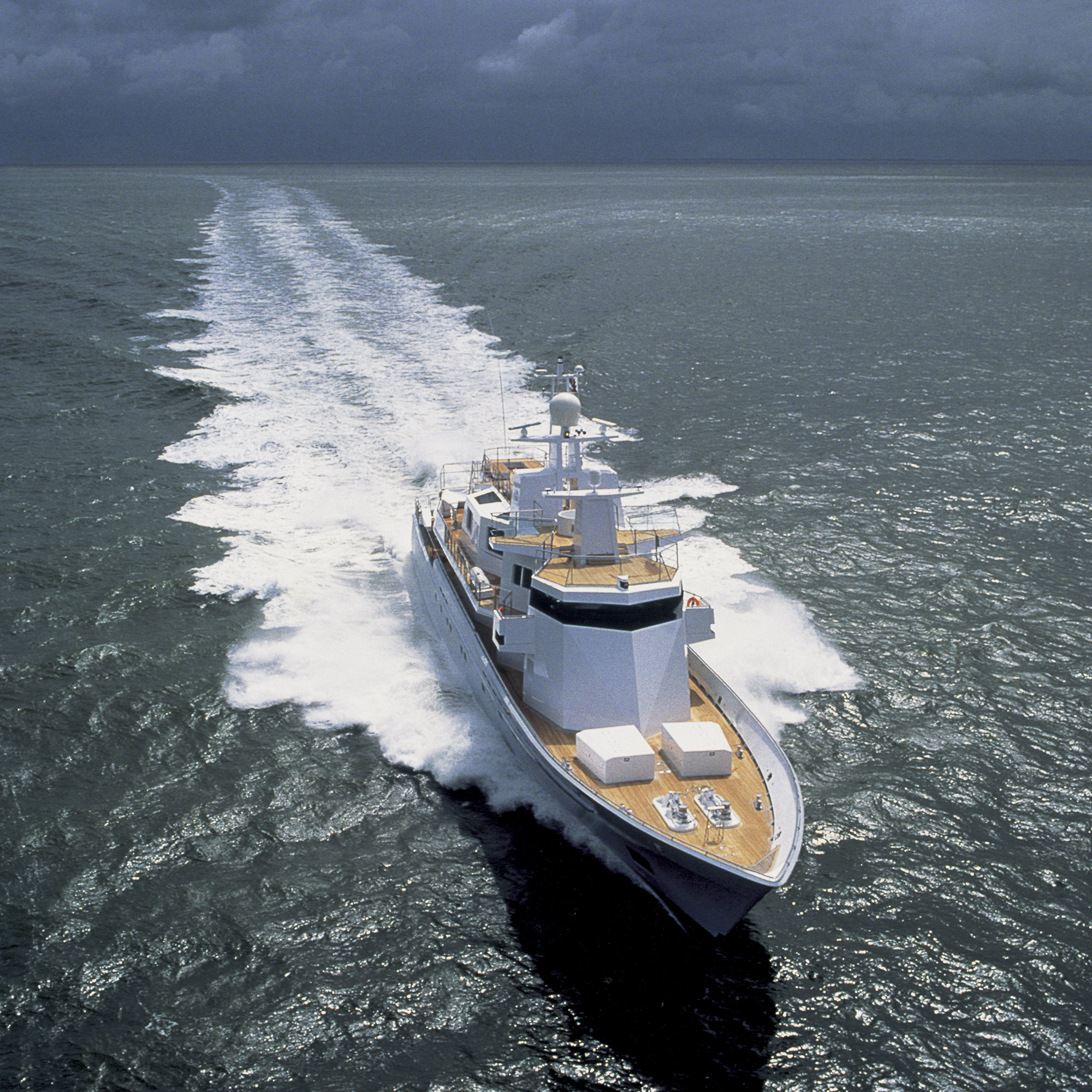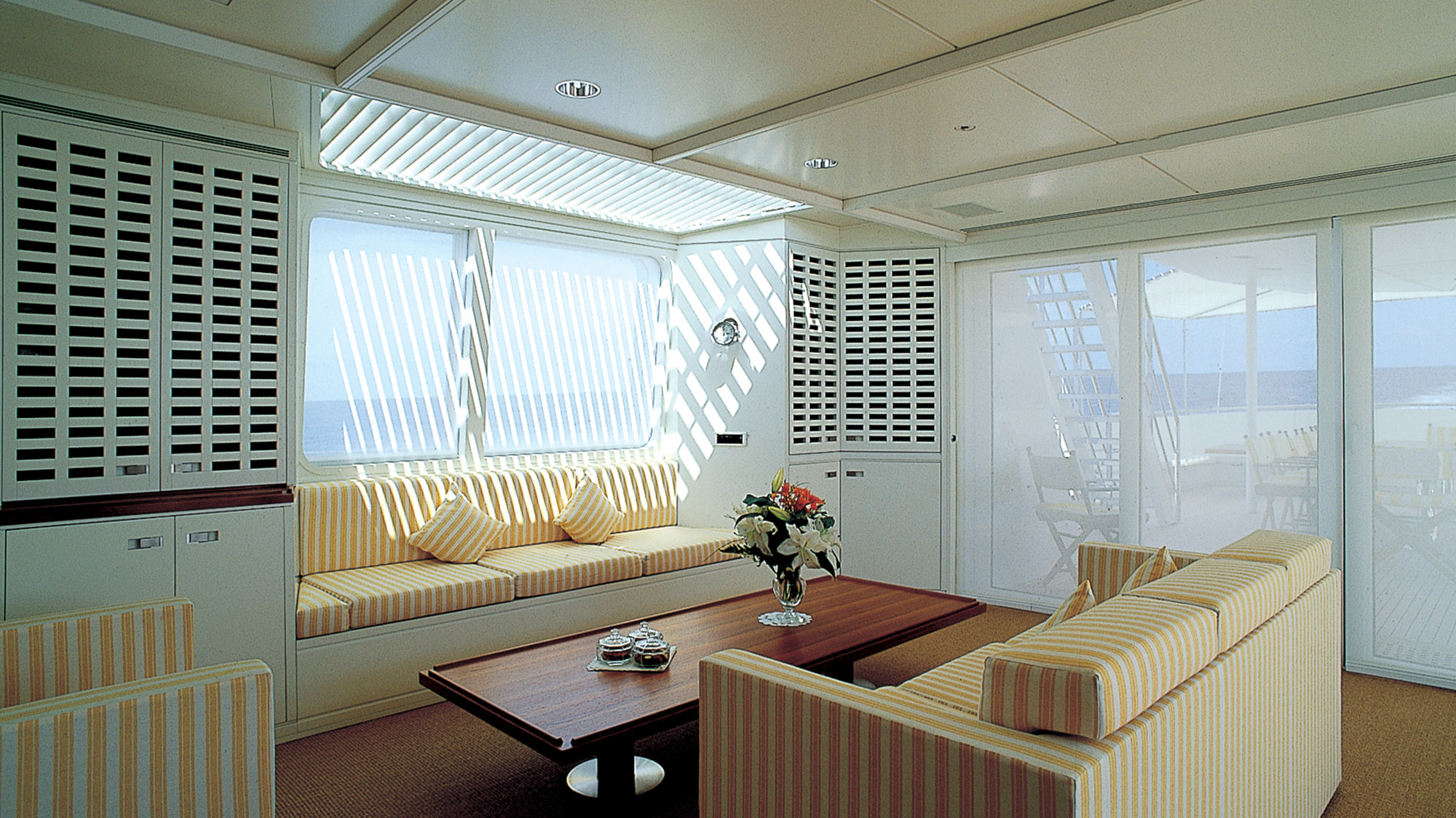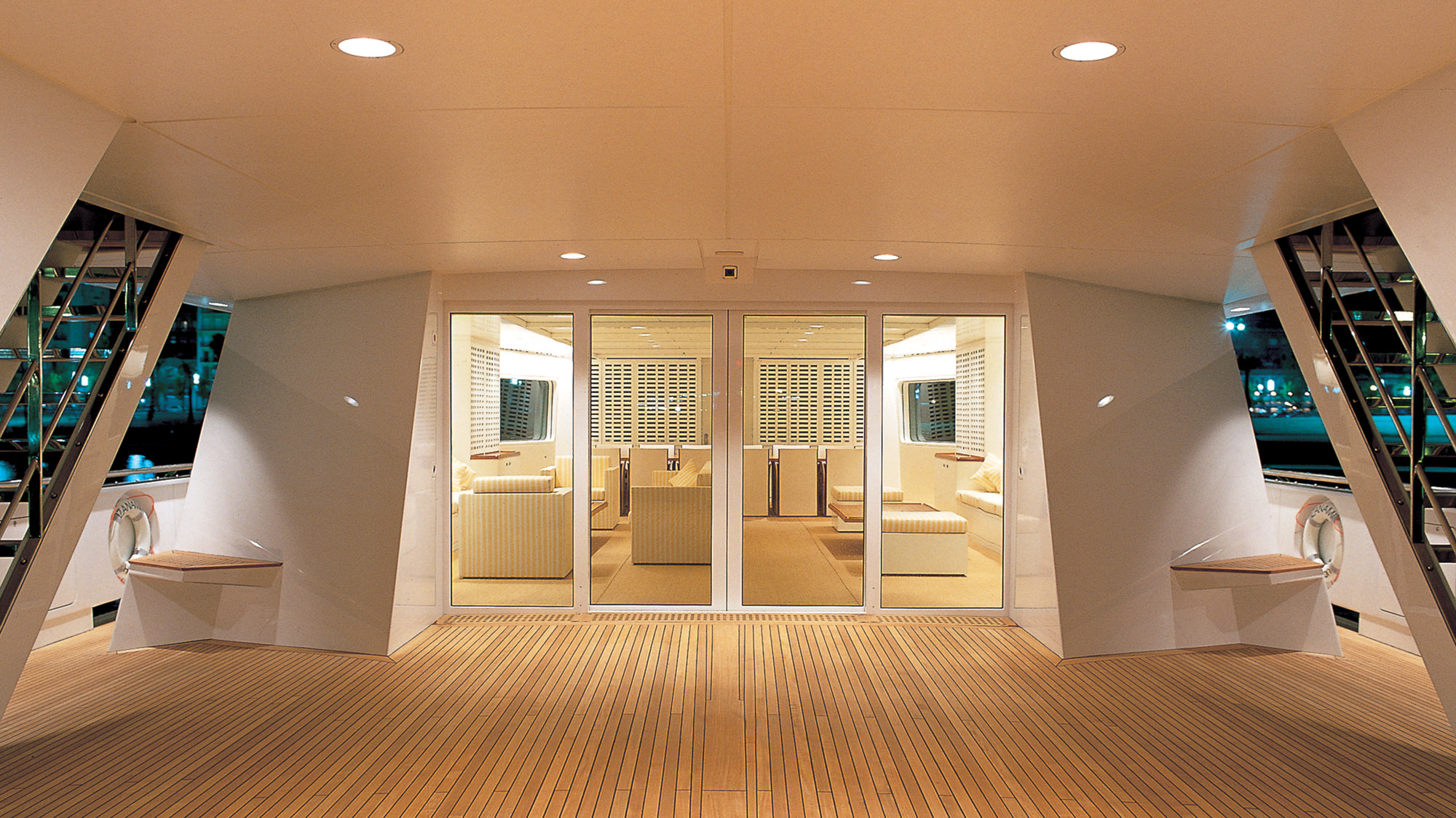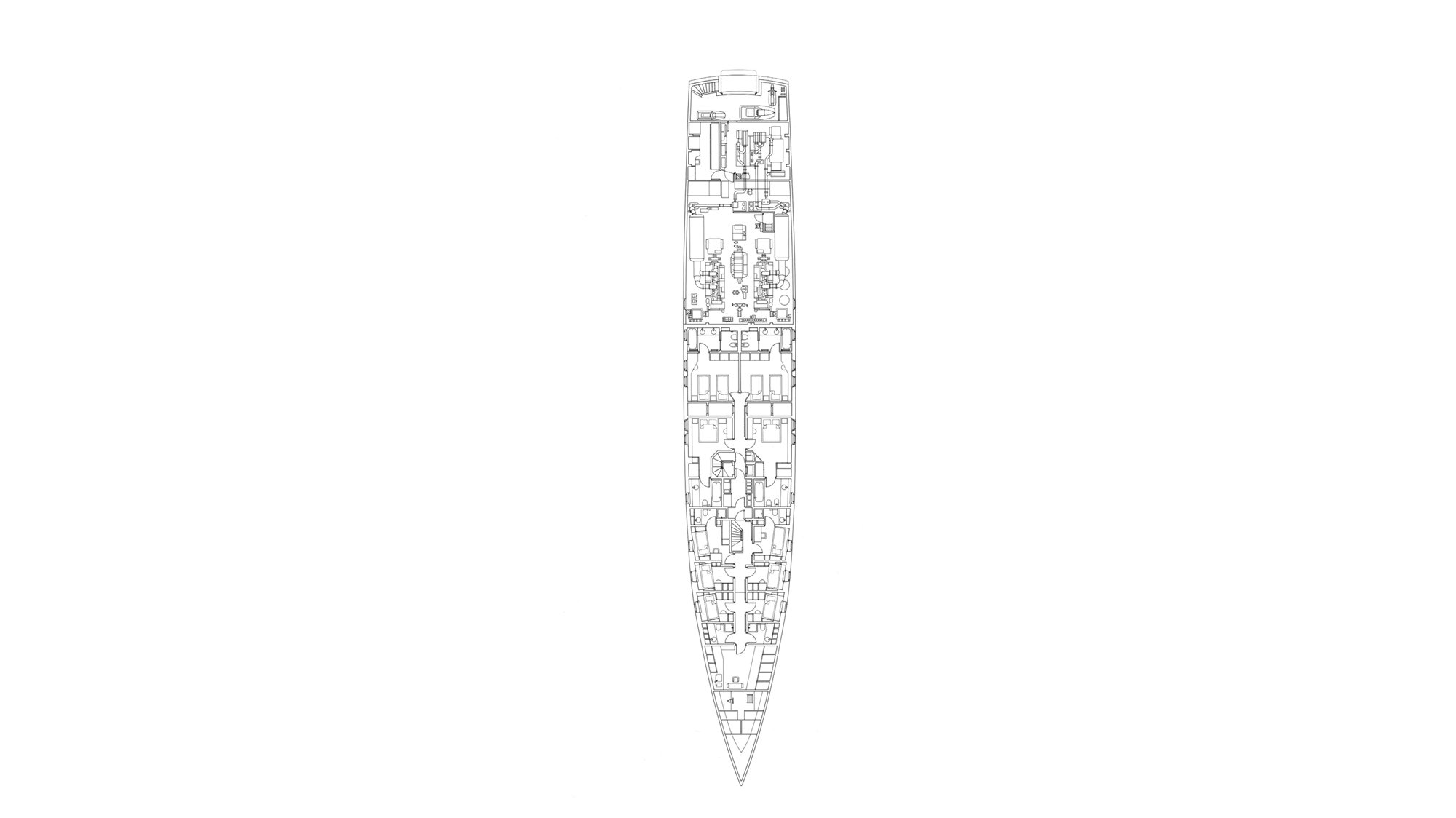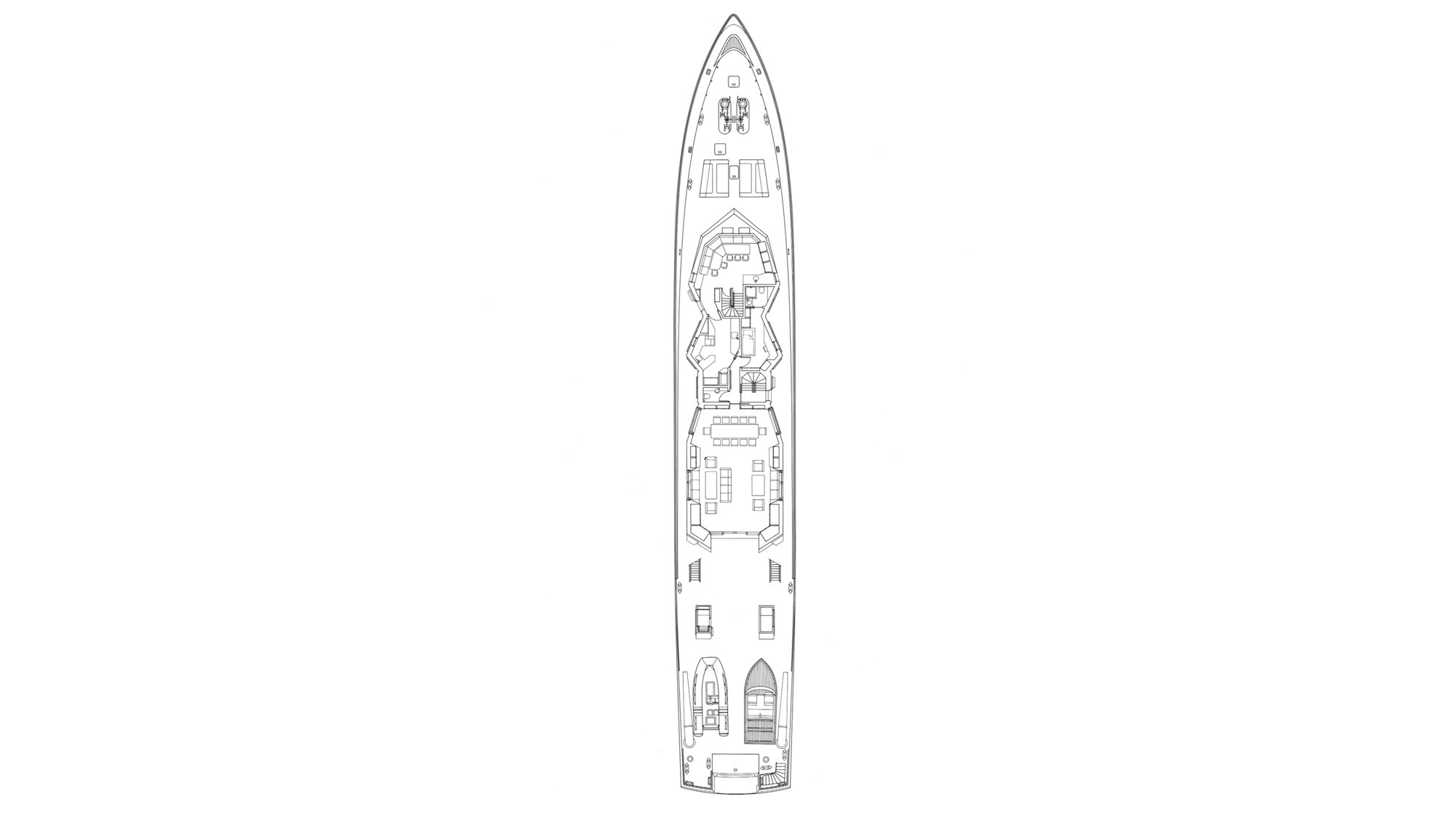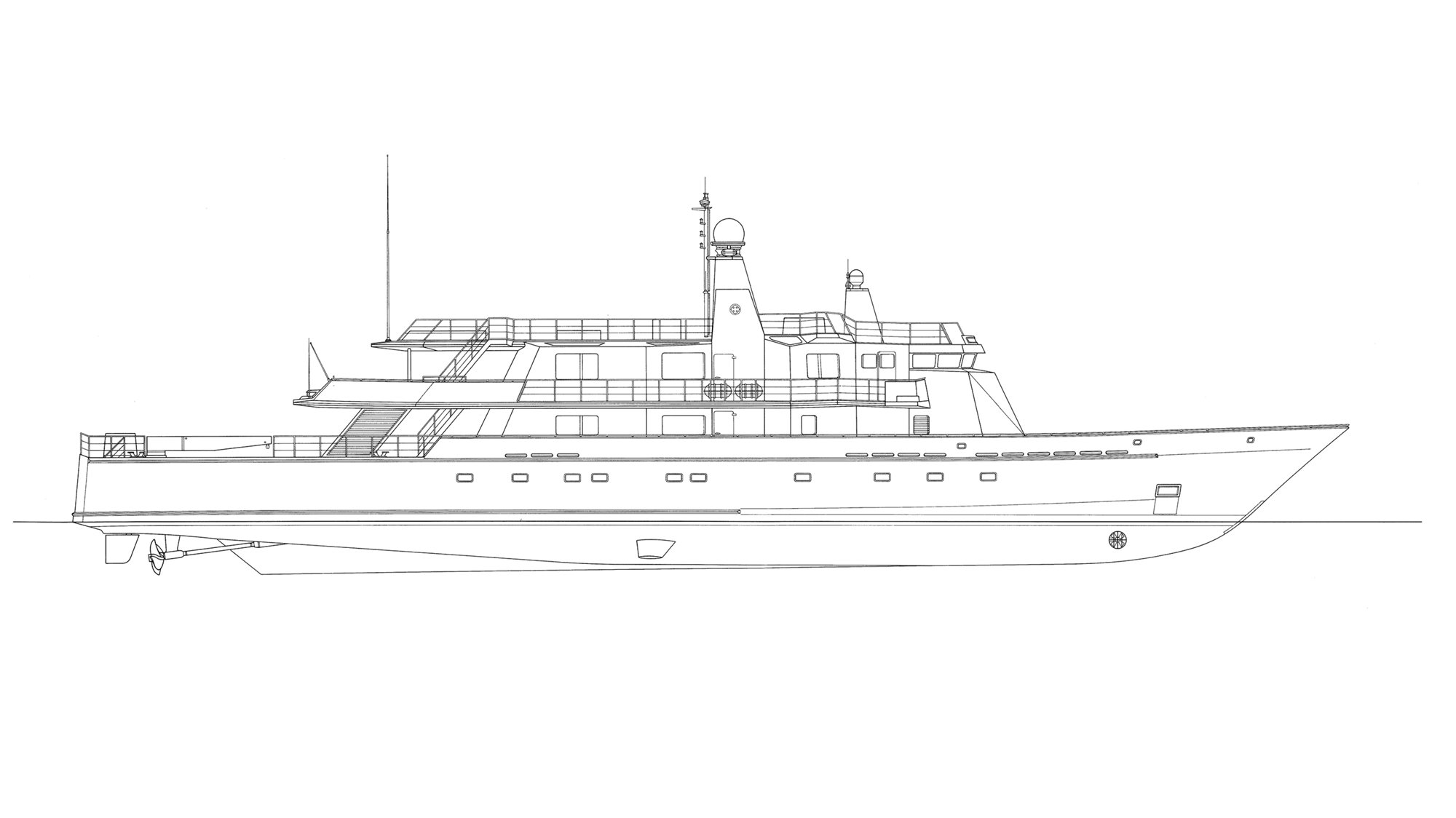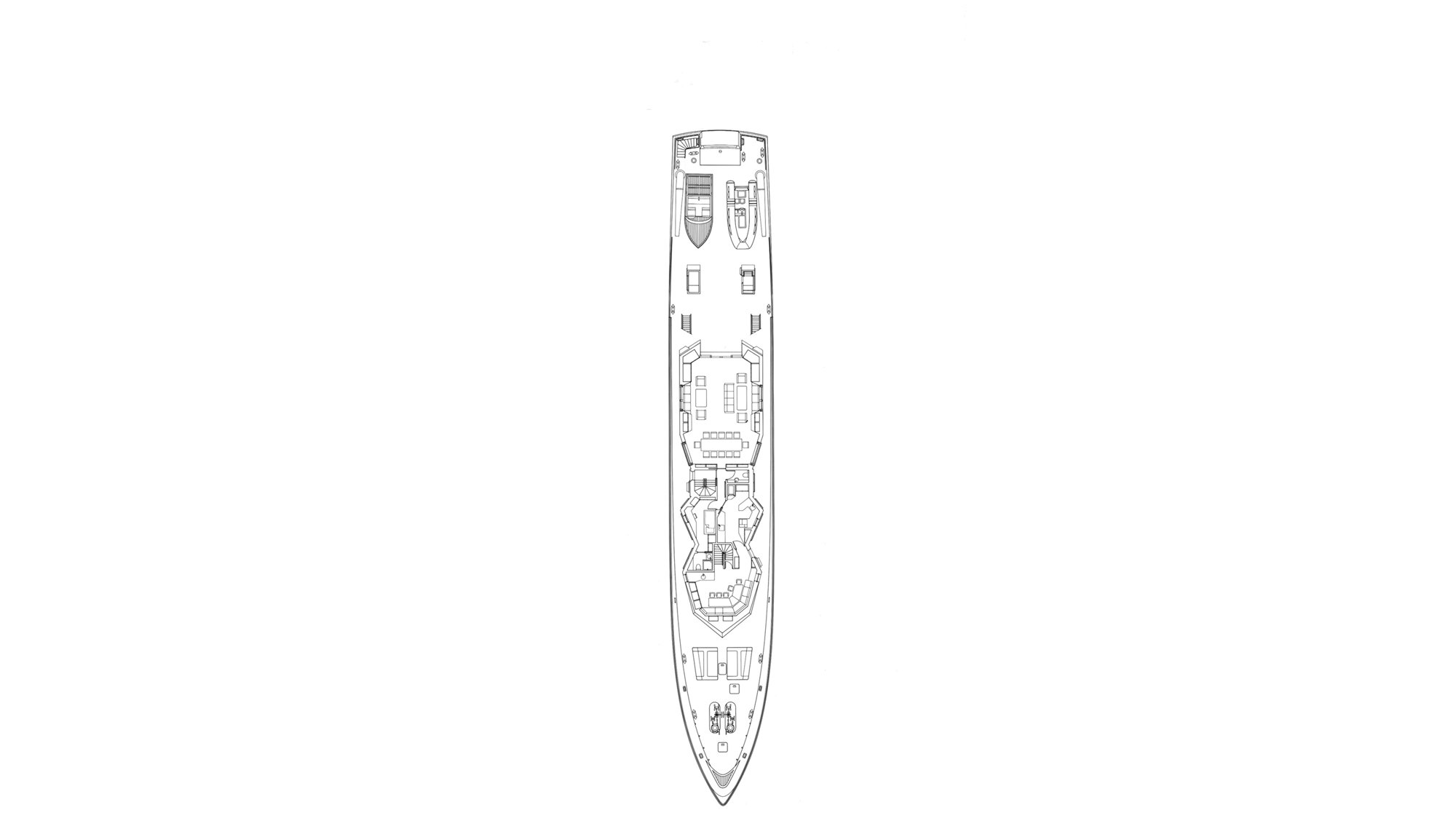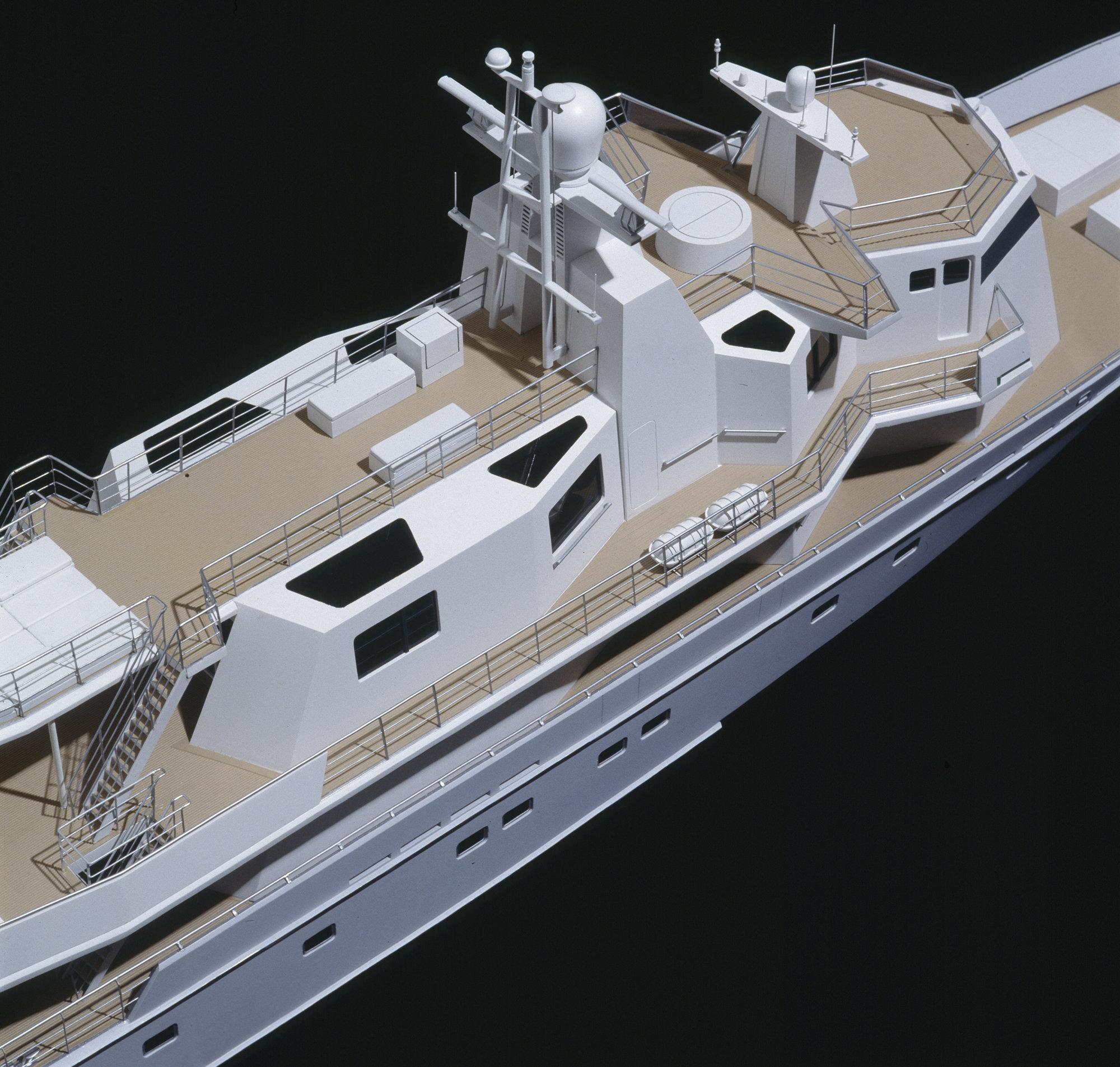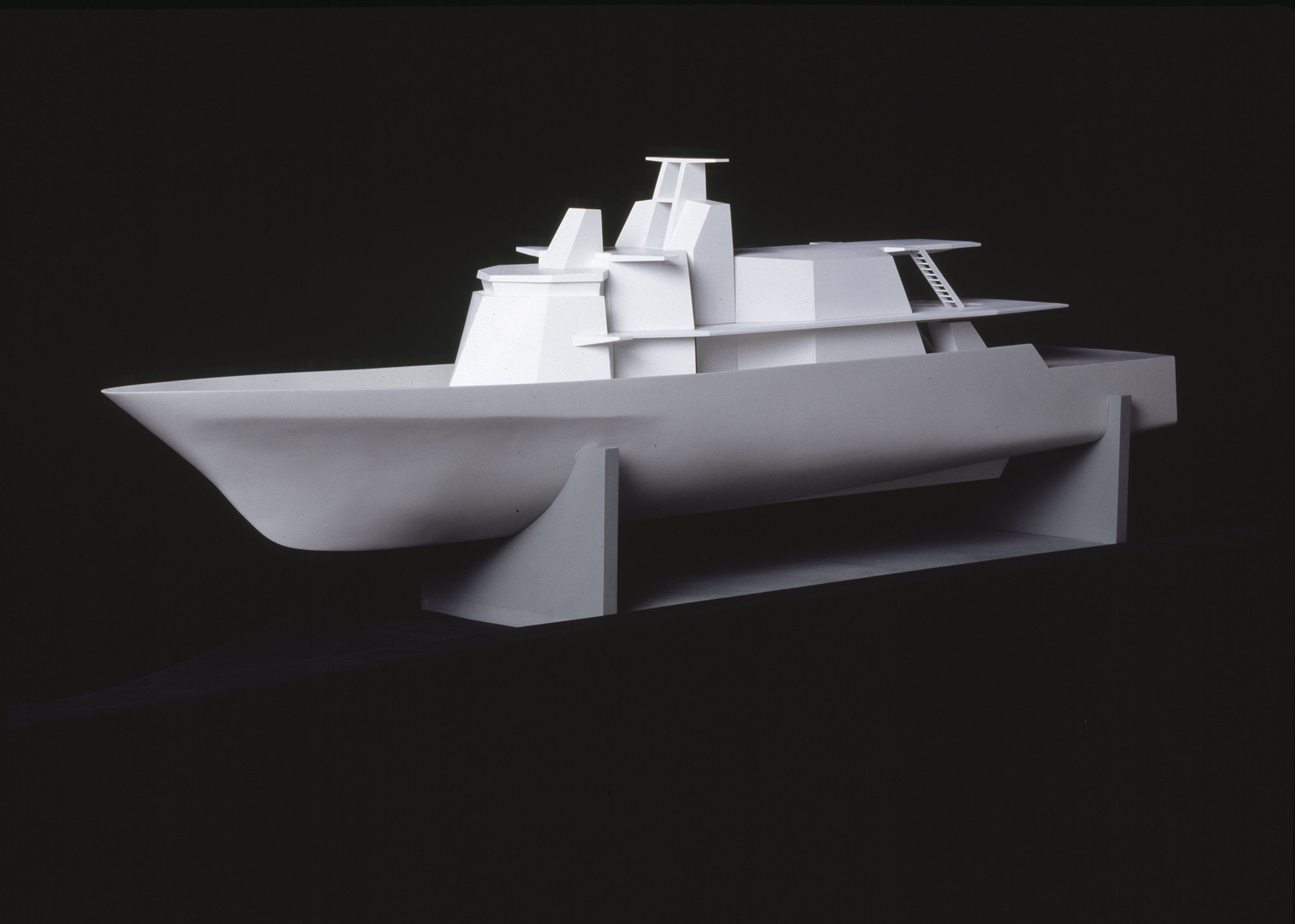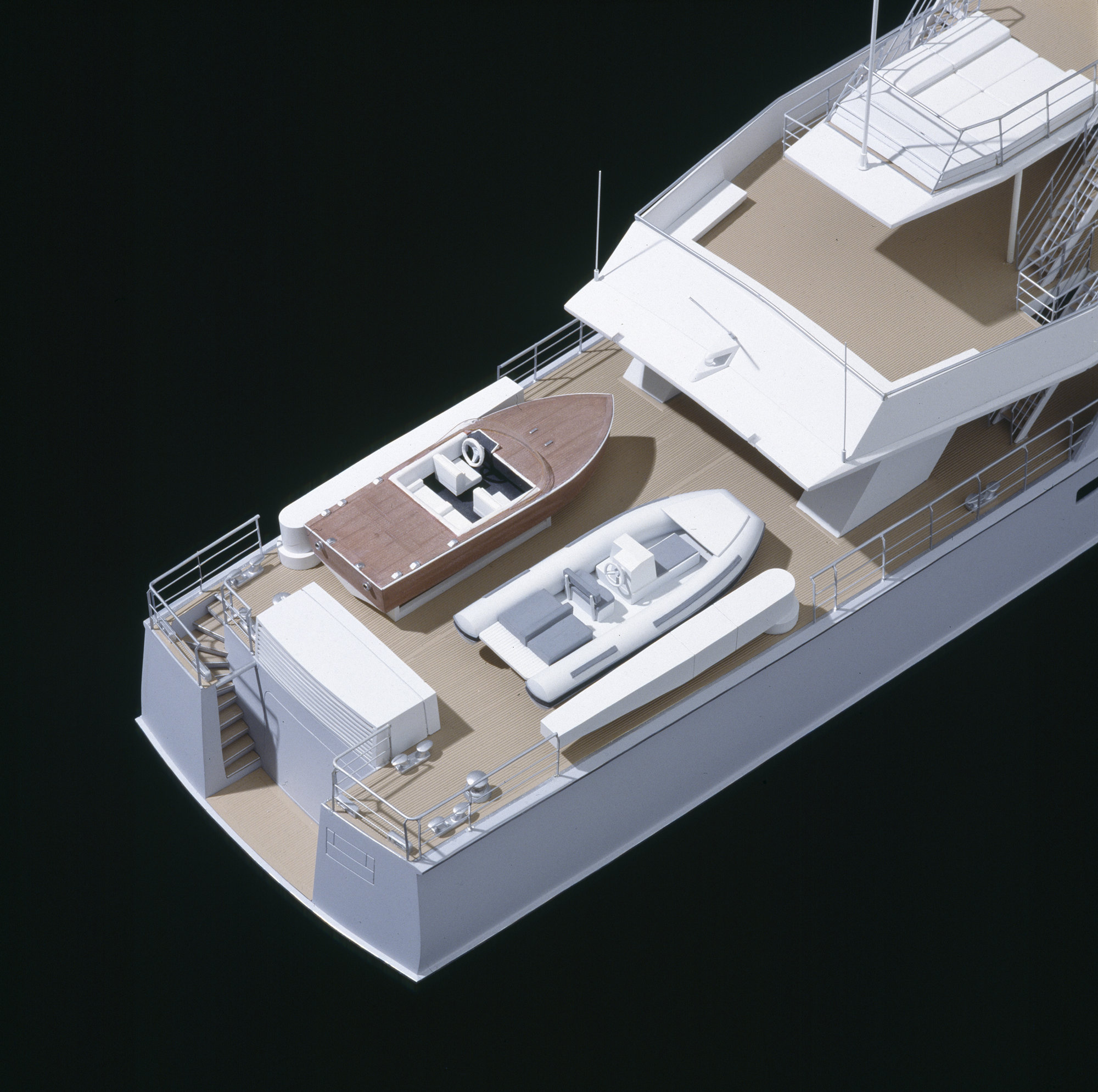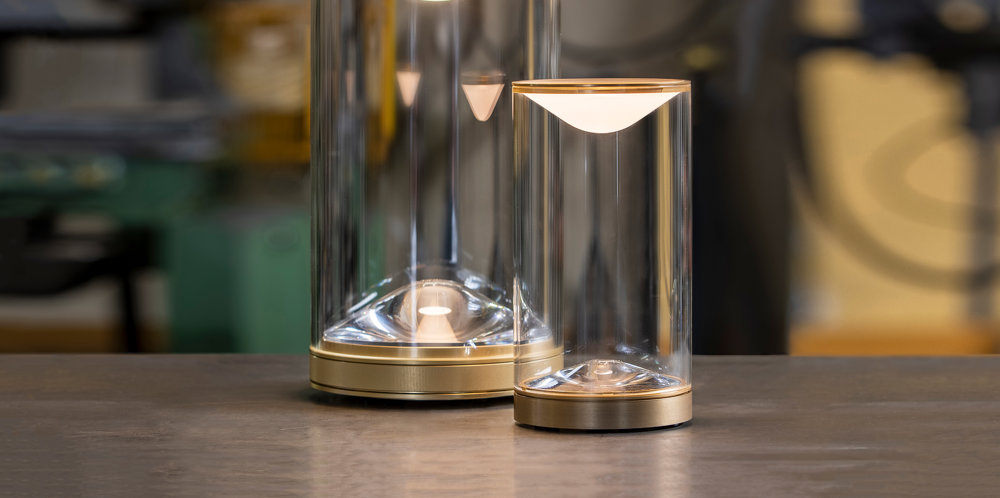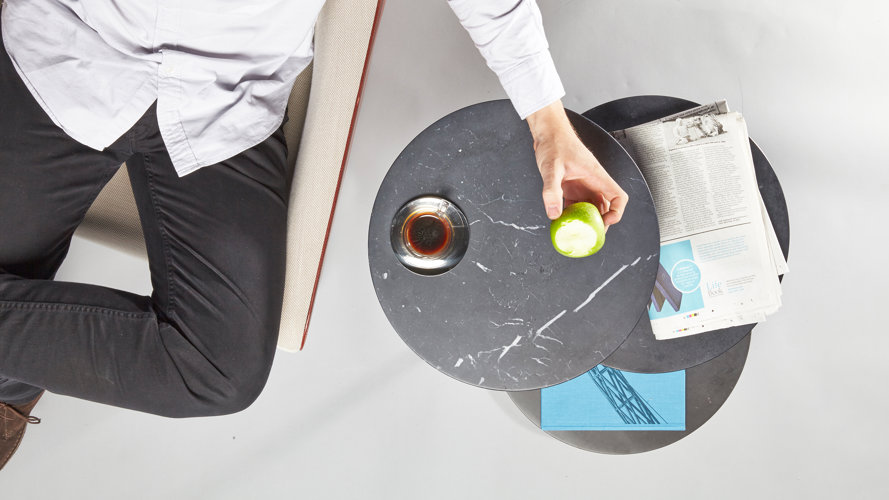The design of most sea-going vessels tends to split responsibilities, with a naval architect working on the exterior and hull, while the superstructure and interior are completed by a designer. The results are often top-heavy, with interiors that are the reverse of shipshape. In contrast, the development of this 58.5-metre private yacht saw architects and engineers working closely together - just as they would on the design of a building. Inspired by naval vessels, in which functional efficiency takes precedence over styling, Izanami is as sleek and fast as a patrol boat, but with open decks and interiors suggestive of a traditional sailing yacht.
When completed, the hull was the largest to be built in aluminium, with hull and superstructure together forming a semi-monococque construction of welded skin, frames and longitudinal stiffeners. The form of the superstructure represents a radical departure from tradition. It is articulated as three elements - suggesting the head, thorax and abdomen of an insect - which define the owner's cabin, the crew's quarters and the wheelhouse respectively. The structure is formed from large plates, some of which rise through the full two levels. Most of these apparently flat panels were, in fact, rolled to create a slight convex curve. This not only increased their rigidity, but also - like entasis on a Classical entablature - helped to avoid the concave appearance sometimes encountered when flat planes meet at an angle. Picture windows in these planes allow generous views from the main cabin and upper-deck spaces, and the interiors focus on high-quality craftsmanship and appropriate materials, with equally comfortable accommodation provided for passengers and crew.
Izanami has transatlantic and worldwide cruising capabilities and is built to German Lloyds certification and ABS standards. It is powered by two MTU diesel engines rated at 4,800 horsepower and has a design speed of 30 knots, although 34 knots was achieved during sea trials. That is equivalent to the speed of sleek transatlantic liners of the past, and almost twice that possible using a conventional displacement hull of the same size.









